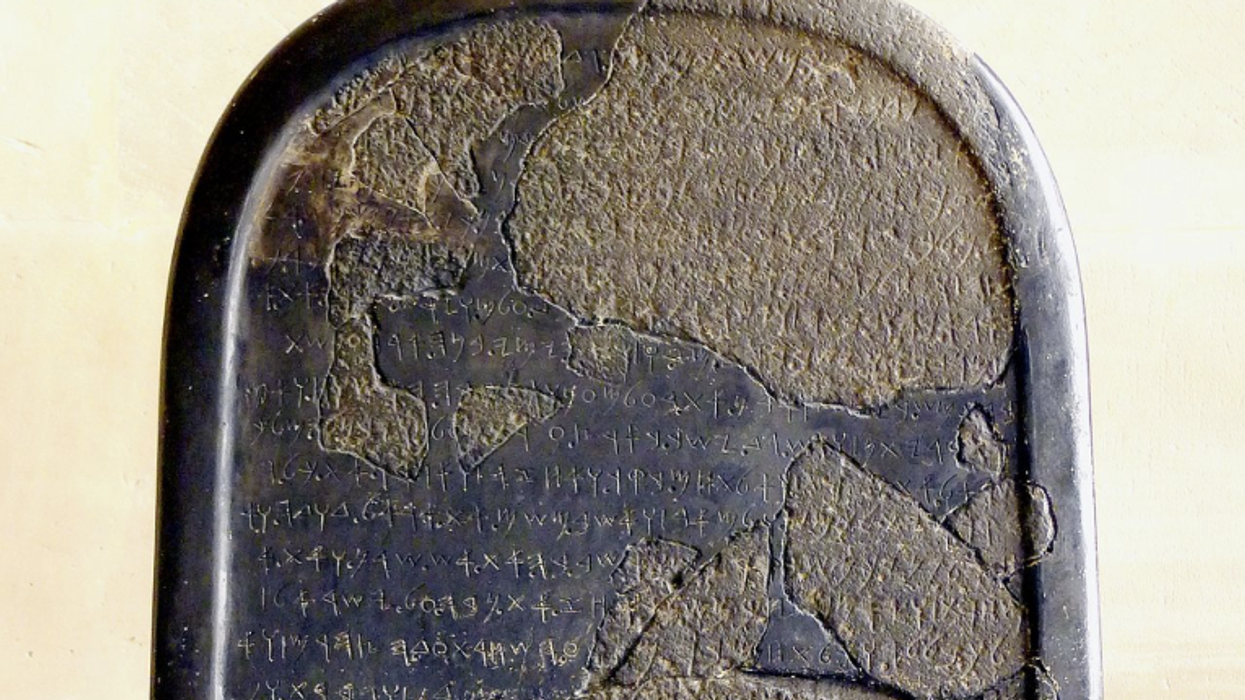
Wikipedia

Researchers have confirmed that a stone artifact from more than 2,800 years ago has written references to King David in the Bible.
The Mesha Stele, also known as the Moabite Stone, dates back to approximately 840 BC. The 3-foot tall stone slab of black basalt chronicles the 9th century BC victories of King Mesha of Moab – an ancient Levantine kingdom located in the area of the current-day country of Jordan.
World History Encyclopedia details the 34 lines of text inscribed on the Mesha Stele:
The inscription describes two aspects of how Mesha lead Moab into victory against ancient Israel. First, he claims to have defeated ancient Israel on many fronts, capturing or reclaiming many cities and slaying the inhabitants. Second, Mesha claims to have reconstructed or repaired many cities and buildings, including a fortress, king's residence, and cisterns for water storage.
In 1868, the Mesha Stele was discovered in Jordan, about 15 miles east of the Dead Sea. It is believed to be the largest known source of Moabite writings. The slab was found completely intact. However, local villagers smashed the Mesha Stele before it was obtained by archaeologists.
According to Patterns of Evidence:
Arguments over the possession of the stele led to it being smashed into several fragments by the Bani Hamida tribe (Bedouins) as an act of defiance against the Ottoman authorities. When it became clear that the ownership dispute and bidding war over the stele were about to go in favor of the Ottoman Turks, the Bedouins heated the stele over a fire while pouring water on it causing the stone to explode into pieces.
Archaeologists wisely made a paper mache impression, known as a "squeeze," of the stone before it was destroyed. Archaeologists were able to reconstruct the Mesha Stele by using the squeeze. The Moabite Stone now resides in the Louvre Museum in Paris, France.
Two historians, Jean-Philippe Delorme and André Lemaire, have found evidence that the Mesha Stele specifically references the biblical King David.
In 2015, a team from the West Semitic Research Project of the University of Southern California took new digital photographs of both the restored stela and the paper squeeze. The team used a method called Reflectance Transformation Imaging (RTI), in which numerous digital images are taken of an artifact from different angles and then combined to create a precise, three-dimensional digital rendering of the piece. This method is especially valuable because the digital rendering allows researchers to control the lighting of an inscribed artifact, so that hidden, faint, or worn incisions become visible. In 2018, the Louvre Museum also took new, high-resolution backlit pictures of the squeeze, where light was projected directly through the 150-year-old paper to provide a clearer view of the ancient letters it records.
The Biblical Archaeology Society notes, "The 'House of David' reference consists of five letters: btdwd (bt = 'house of' and dwd = David). The first and fourth letters, bet and waw, were visible beforehand. Lemaire and Delorme see traces of the other three letters, taw, dalet, and dalet, on the new images. To them, the reading 'House of David' is now set in stone."
Like Blaze News? Bypass the censors, sign up for our newsletters, and get stories like this direct to your inbox. Sign up here!